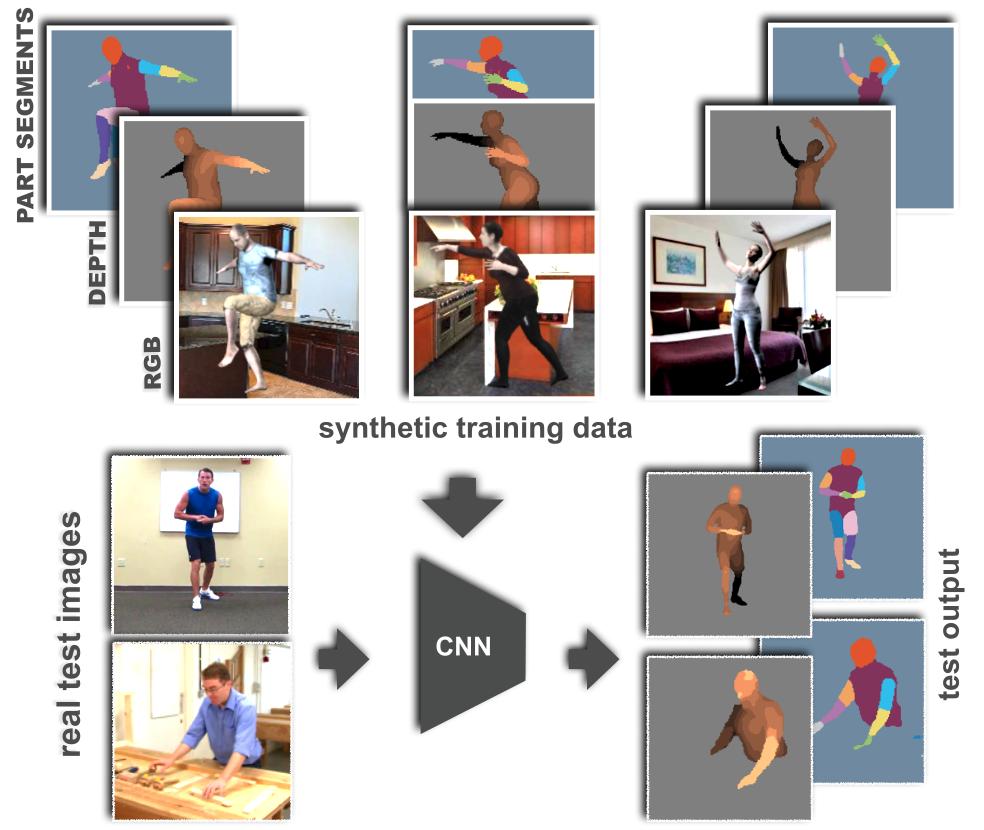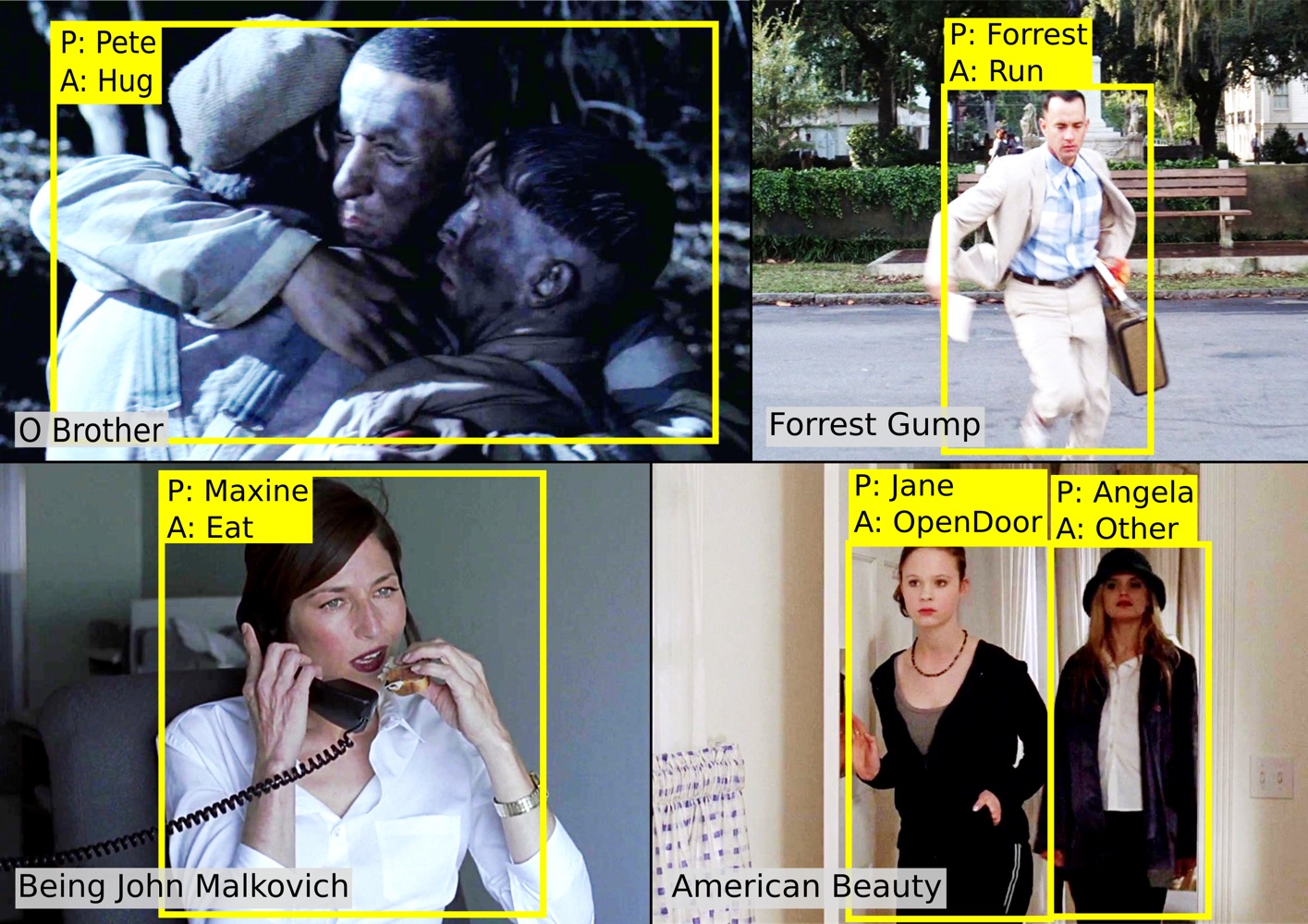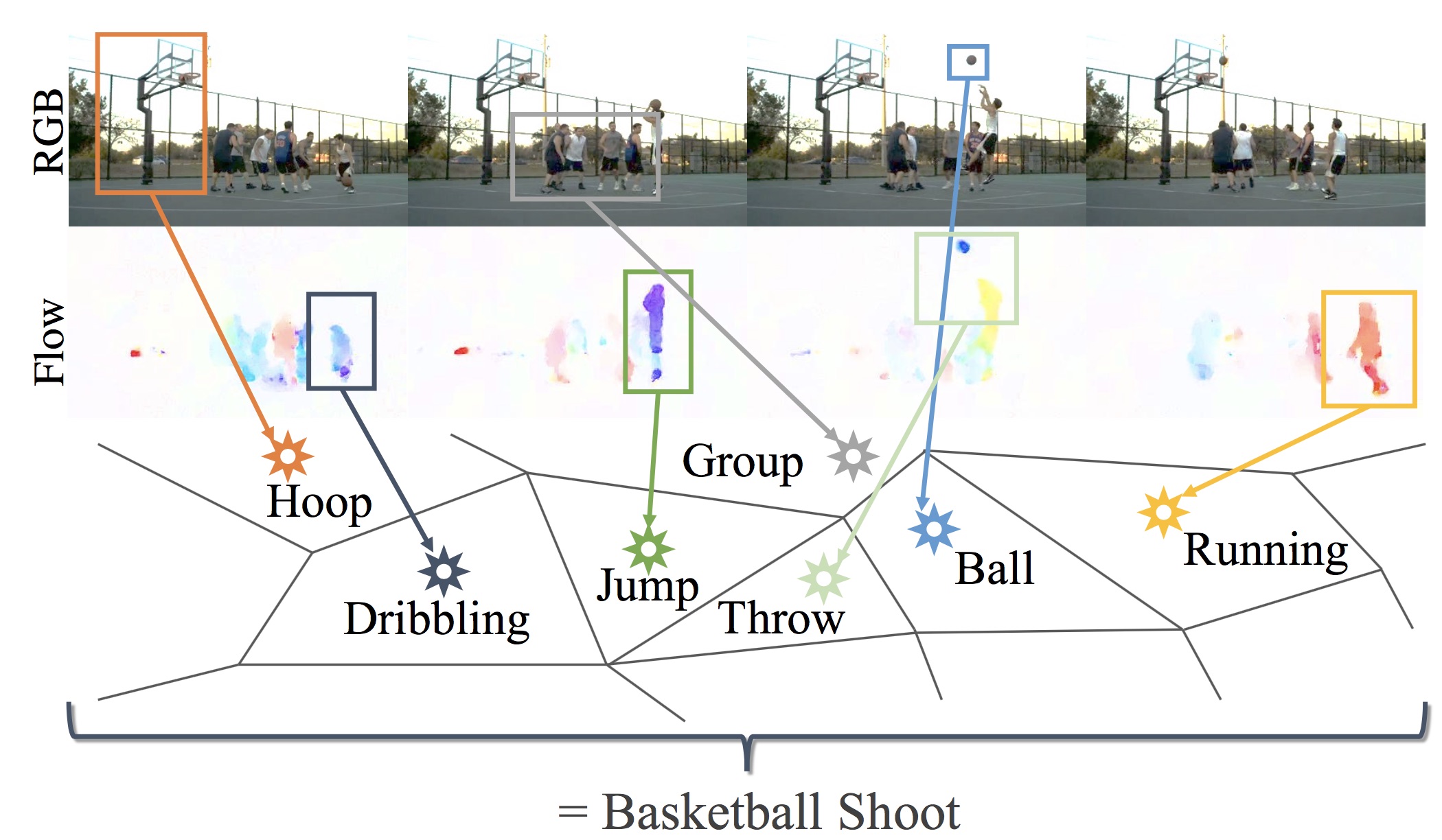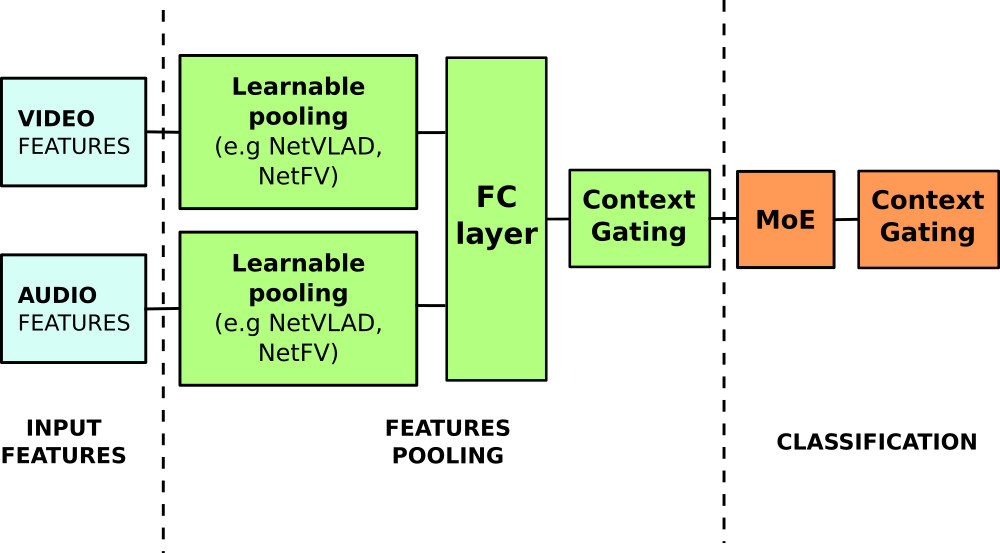Section: New Results
Human activity capture and classification
Learning from Synthetic Humans
Participants : Gül Varol, Javier Romero, Xavier Martin, Naureen Mahmood, Michael Black, Ivan Laptev, Cordelia Schmid.
Estimating human pose, shape, and motion from images and video are fundamental challenges with many applications. Recent advances in 2D human pose estimation use large amounts of manually-labeled training data for learning convolutional neural networks (CNNs). Such data is time consuming to acquire and difficult to extend. Moreover, manual labeling of 3D pose, depth and motion is impractical. In [23], we present SURREAL: a new large-scale dataset with synthetically-generated but realistic images of people rendered from 3D sequences of human motion capture data. We generate more than 6 million frames together with ground truth pose, depth maps, and segmentation masks. We show that CNNs trained on our synthetic dataset allow for accurate human depth estimation and human part segmentation in real RGB images, see Figure 10. Our results and the new dataset open up new possibilities for advancing person analysis using cheap and large-scale synthetic data. This work has been published in [23].
|
Learning from Video and Text via Large-Scale Discriminative Clustering
Participants : Miech Antoine, Alayrac Jean-Baptiste, Bojanowski Piotr, Laptev Ivan, Sivic Josef.
Discriminative clustering has been successfully applied to a number of weakly-supervised learning tasks. Such applications include person and action recognition, text-to-video alignment, object co-segmentation and colocalization in videos and images. One drawback of discriminative clustering, however, is its limited scalability. We address this issue and propose an online optimization algorithm based on the Block-Coordinate Frank-Wolfe algorithm. We apply the proposed method to the problem of weakly supervised learning of actions and actors from movies together with corresponding movie scripts. The scaling up of the learning problem to 66 feature length movies enables us to significantly improve weakly supervised action recognition. Figure 11 illustrates output of our method on movies. This work has been published in [15]
|
ActionVLAD: Learning spatio-temporal aggregation for action classification
Participants : Rohit Girdhar, Deva Ramanan, Abhinav Gupta, Josef Sivic, Bryan Russell.
In this work, we introduce a new video representation for action classification that aggregates local convolu-tional features across the entire spatio-temporal extent of the video. We do so by integrating state-of-the-art two-stream networks [42] with learnable spatio-temporal feature aggregation [6]. The resulting architecture is end-to-end trainable for whole-video classification. We investigate different strategies for pooling across space and time and combining signals from the different streams. We find that: (i) it is important to pool jointly across space and time, but (ii) appearance and motion streams are best aggregated into their own separate representations. Finally, we show that our representation outperforms the two-stream base architecture by a large margin (13out-performs other baselines with comparable base architec-tures on HMDB51, UCF101, and Charades video classification benchmarks. The work has been published at [12] and the method is illustrated in Figure 12.
|
Localizing Moments in Video with Natural Language
Participants : Lisa Hendricks, Oliver Wang, Eli Shechtman, Josef Sivic, Trevor Darrell, Bryan Russell.
We consider retrieving a specific temporal segment, or moment, from a video given a natural language text description. Methods designed to retrieve whole video clips with natural language determine what occurs in a video but not when. To address this issue, we propose the Moment Context Network (MCN) which effectively localizes natural language queries in videos by integrating local and global video features over time. A key obstacle to training our MCN model is that current video datasets do not include pairs of localized video segments and referring expressions, or text descriptions which uniquely identify a corresponding moment. Therefore, we collect the Distinct Describable Moments (DiDeMo) dataset which consists of over 10,000 unedited, personal videos in diverse visual settings with pairs of localized video segments and referring expressions. We demonstrate that MCN outperforms several baseline methods and believe that our initial results together with the release of DiDeMo will inspire further research on localizing video moments with natural language. The work has been published at [14] and results are illustrated in Figure 13.
|
Learnable pooling with Context Gating for video classification
Participants : Miech Antoine, Laptev Ivan, Sivic Josef.
Common video representations often deploy an average or maximum pooling of pre-extracted frame features over time. Such an approach provides a simple means to encode feature distributions, but is likely to be suboptimal. As an alternative, in this work we explore combinations of learnable pooling techniques such as Soft Bag-of-words, Fisher Vectors, NetVLAD, GRU and LSTM to aggregate video features over time. We also introduce a learnable non-linear network unit, named Context Gating, aiming at modeling interdependencies between features. The overview of our network architecture is illustrated in Figure 14. We evaluate the method on the multi-modal Youtube-8M Large-Scale Video Understanding dataset using pre-extracted visual and audio features. We demonstrate improvements provided by the Context Gating as well as by the combination of learnable pooling methods. We finally show how this leads to the best performance, out of more than 600 teams, in the Kaggle Youtube-8M Large-Scale Video Understanding challenge. This work has been published in [26].






